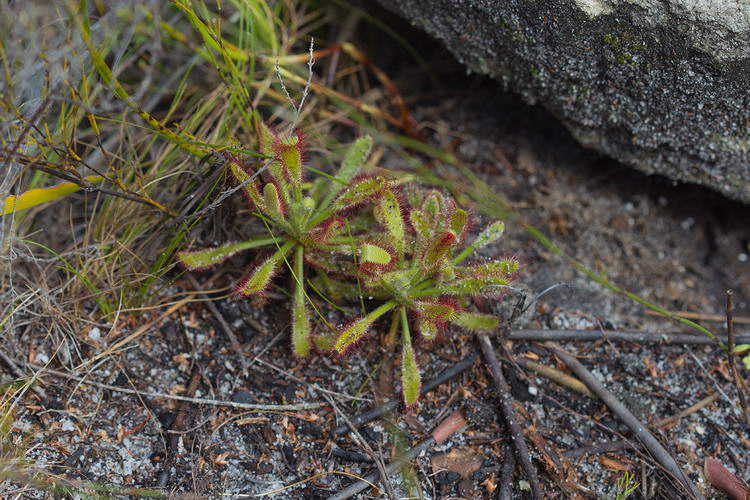Drosera ramentacea
(Drosera ramentacea)

Description
Drosera ramentacea is a carnivorous plant of the genus Sundew ( Drosera ). She is native to South Africa. Drosera ramentacea are herbaceous plants . They grow up to 50 centimeters high upright from older, lower-lying, woody stems, which are covered densely with old, withered, drooping deciduous and Nebenblättern . The leaves are arranged like a roof tile, the petiole is stiff, flattened, with long, rust-brown hair scattered and up to 5 inches long, they are initially upright, but with age, they hang down. Leaflets are fused below the leaf and about 7 millimeters long, divided above into up to three pointed, solitary segments, the middle of which is the widest. The stipule is membranous, rust-colored and is located on the stem. The blade is narrow lanceolate, up to 4 inches long and 8 millimeters wide, the edges are densely covered with long, thread-like tentacles bearing club-shaped gland heads , which are arranged to the center extremely short, in between, there are individual longer hair. The inflorescence axis arises from the leaf axils near the top of the plant, is forked or branched, leafless and up to 25 inches long. At its end, it carries up to thirty flowers , which are up to 5 millimeters long pedicels . The sepals are fused, the individual lobes are up to 6 millimeters long. The petals are reversed-ovate to wedge-shaped, magenta and have a length of up to 1.5 centimeters. The short stamens are flattened, the connective is rhombic shaped. The stems are divided from the base, long and spread, the scars are occasionally split and slightly swollen. The capsule fruits are oblong-round, the seeds filiform, brownish, up to 0.4 millimeters long and pearly patterned. Drosera, commonly known as the sundews, is one of the largest genera of carnivorous plants, with at least 194 species. These members of the family Droseraceae lure, capture, and digest insects using stalked mucilaginous glands covering their leaf surfaces. The insects are used to supplement the poor mineral nutrition of the soil in which the plants grow. Various species, which vary greatly in size and form, are native to every continent except Antarctica.
Taxonomic tree:







